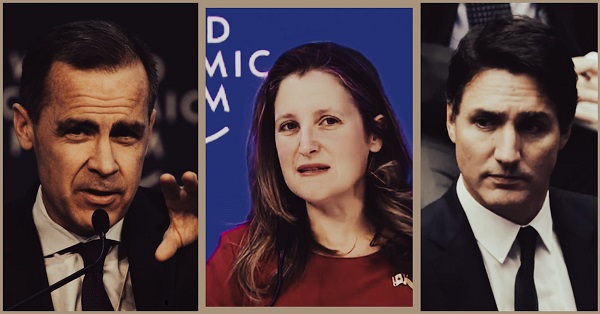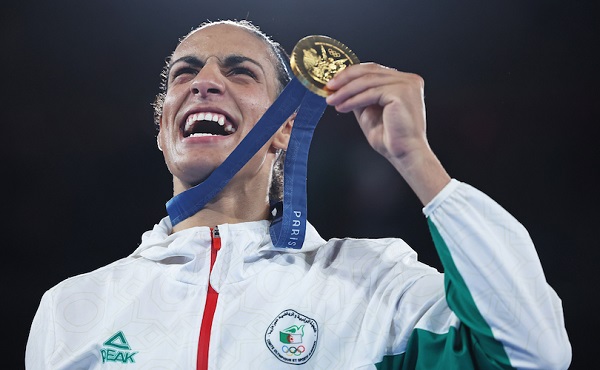With Polls in Free Fall and a Caucus Revolt Brewing, Analyst believe the Liberals will Bet on Identity Politics to Distract Canadians From Nine Years of Failure
If you haven’t already, crank up Whitesnake’s Here I Go Again, because the Liberal Party is hitting all the same notes in their spectacular fall from grace. Rumors are swirling that today Justin Trudeau, the king of platitudes and bad policies, might finally call it quits after nine long years of setting Canada on fire and calling it progress.
So, why is Trudeau on the verge of resignation? Because he’s facing a caucus revolt. Apparently, some of these MPs weren’t thrilled they didn’t get picked for the very last liberal cabinet shuffle, (or maybe it has to do with the latest Anguis Reid polls) which is funny considering they’ve had years to boot this guy. Instead, they’ve spent their time smiling for photo ops and pretending the country isn’t spiraling into chaos. Now, with the next election practically on the doorstep—2025, people—they’re panicking. And it’s glorious to watch.
Let’s set the stage: the latest Angus Reid poll is catastrophic for the Liberals. They’re sitting at 16%—that’s not just bad, that’s “we’re going to lose half our seats” bad. For context, the NDP is at 21%, which is embarrassing enough, but the Conservatives are at 45%. These are Harper-era numbers, folks. Pierre Poilievre isn’t just winning; he’s running victory laps before the race has even started.
So, what are the Liberals going to do? Well, they have three options. Spoiler alert: they’re all terrible.
Option 1: Prorogue Parliament and Hold a Leadership Race
So here’s the Liberals’ desperate move: prorogue Parliament, delay governing, and launch a leadership race to distract Canadians from their failures. It’s a political circus waiting to happen. Every ambitious Liberal—Freeland, Carney, Champagne—will throw their hat in the ring, and none of them are ready to clean up Trudeau’s mess.
But here’s the kicker: the clock is ticking. The fiscal year ends March 31, and without passing Interim Supply, the government literally shuts down. A leadership race takes months, leaving the party paralyzed while Pierre Poilievre dominates the narrative.
A new leader won’t fix anything; they’ll just inherit a sinking ship and take the blame for the inevitable electoral disaster. This isn’t a solution—it’s a slow, painful march toward oblivion while Canadians demand real leadership.
Option 2: Force a Leader Down Our Throats
Here’s where it gets spicy. The Liberals could skip the drama and appoint a new leader outright—someone like Chrystia Freeland. This would be their Kamala Harris moment. They’d toss Trudeau overboard, slap Freeland on the podium, and scream from the rooftops, “Canada’s First Female Prime Minister!” The media would eat it up. They’d call it historic, groundbreaking, revolutionary.
But here’s the first roadblock: Trudeau doesn’t have to go anywhere unless he decides to. That’s right, folks—there’s no magical “kick him out” button in the Liberal Party rulebook. Even if half his caucus is banging down his office door with pitchforks, Trudeau can just sit back, flash his trademark grin, and say, “I’m still your guy.” It’s less of a democratic process and more of a monarchy with better PR.
Now, let’s assume Trudeau does step down because, let’s face it, his ego might be the only thing keeping him there. Enter Chrystia Freeland. The Liberals would roll her out as the savior of their sinking ship.
But here’s the problem: Freeland’s record is awful. She’s been Trudeau’s loyal sidekick for years, backing every bad policy this government has pushed. From the $65 billion budget blowout to fraudulent COVID loans to the carbon tax disaster, Freeland has her fingerprints all over this mess. She’s not a fresh start; she’s Trudeau 2.0, but with less charisma.
And let’s be real, the Liberals wouldn’t run on their record because their record is a disaster. Instead, they’ll double down on identity politics. Freeland will be the face of the campaign, and the talking points will be predictable: “Conservatives hate women. Conservatives will ban abortion. Conservatives are scary.” It’s the same broken record we’ve heard a million times before. It didn’t work in the U.S., and it’s not going to work here. Canadians are smarter than that.
Option 3: Let Trudeau Go Down with the Ship
Now, this might actually be the smartest move. Trudeau built this disaster. He deserves to be the face of the loss. Let him captain the ship straight into the abyss, take the hit in the next election, and then rebuild from the ashes. It’s not pretty, but it’s probably the cleanest way to salvage the Liberal brand long-term.
But we all know the Liberals won’t do this. They’re too arrogant, too desperate, and too addicted to their own spin. Instead, they’ll probably shove Freeland into the spotlight either through a leadership race or just by bypassing the vote and just giving her the reigns and let her ride the Titanic into electoral oblivion, and then act surprised when it all goes horribly wrong.
Trudeau’s Titanic, Freeland’s Fantasy, and the Liberal Pipe Dream
So, here’s what I expect to happen, and honestly? Good riddance to Trudeau. Nine years of turning this country into a woke, bloated, over-taxed shell of what it used to be—his time is up. But let’s be real, the Liberals’ ship hit the iceberg years ago. Now they’re panicking because it’s finally sinking, and they’re trying to figure out who’s going to be the face of the wreckage. Spoiler alert: none of their options are good.
Here’s their play: they’re going to pull the Kamala Harris switcheroo. Replace Trudeau with Chrystia Freeland, slap a big, shiny label on her as Canada’s “First Female Prime Minister,” and hope nobody notices she was the co-pilot of this crash. Freeland has been positioning herself for this moment for years. She’s stood right next to Trudeau, smiling, nodding, and championing the very policies that have made Canadians poorer, angrier, and ready to vote Conservative in record numbers.
But here’s what they don’t want you to know—and here’s what they won’t campaign on: the Liberal record. Why? Because it’s abysmal. Corruption? Check. They handed out COVID loans like Halloween candy, with billions lost to fraud. Deficits? Oh, just a casual $65 billion for 2024. Inflation? A raging fire that’s destroying Canadians’ savings and quality of life. Authoritarian measures? Let’s not forget freezing bank accounts during the Freedom Convoy protests. Big government? That’s not just their record; it’s their entire identity.
And with Freeland at the helm, that’s not going to change. What’s the plan? Double down on identity politics, of course. “Chrystia Freeland: Canada’s First Female Prime Minister.” That’ll be the headline. That’ll be the news cycle. And anyone who questions her? Sexist. Misogynist. Anti-woman. Oh, and here’s the cherry on top: they’ll pivot straight to abortion rights. Why? Because they think it’s the one play that still works. Ignore the economy. Ignore the housing crisis. Ignore the fact that Canadians are literally rationing food. Just scream, “The Conservatives hate women!” and hope it sticks.
If I were a Liberal strategist—and thank God I’m not—I’d tell them to shove Freeland down our throats now. Why? Because the leader of the Titanic isn’t making it out alive. Whoever takes over the Liberal Party right now is going down with the ship, no question about it. Freeland appeals to the Liberal base: the blue-haired Twitter warriors, the downtown elites, the latte liberals. That’s her crowd. But here’s the problem: that’s it. She’s not reaching the working-class Canadians who are sick of paying for Liberal failures. Hillary Clinton has more likability than Freeland, and that’s saying something.
So, yes, they’ll run her on abortion rights, paint the Conservatives as the boogeyman, and pretend Canadians don’t notice they’ve been absolutely terrible for nine years. But let’s be honest—this is a political kamikaze mission for Freeland. The election results in 2025 are going to be catastrophic for the Liberals. And once the dust settles, Freeland is finished. She’ll be the face of the defeat, the one who led the party into the abyss.
And that’s why the real Liberal leadership race starts after the election. Mark Carney, the former Bank of Canada governor, is waiting in the wings. He’s smart enough to know the Liberals need to burn to the ground first before they can rebuild. He’s the only one who can go toe-to-toe with Pierre Poilievre on fiscal policy. If the Liberals want to have a shot at relevance in 10 years, Carney’s their guy. Pair him with someone like Christy Clark as deputy liberal opposition leader, and maybe—maybe—they can reforge the Liberal brand.
But Trudeau? He should go down with the ship. He built this disaster. He’s the reason the Liberals are at 16% in the polls while the Conservatives are at 45%. Let him take the fall. Let the party burn, and let the next generation of upstarts fight over the ashes. Freeland can have her moment, her delusion that she can fix this, but she’s only walking into political oblivion.
So here’s my advice to the Liberals: pour the champagne, play the violin, and let Justin Trudeau captain his sinking ship. And hey, as the ship goes down, maybe Trudeau can declare himself a transgender woman to grab the first spot on the lifeboat—because nothing says progressive hero like skipping the line while the rest of the crew drowns in his mess.
















